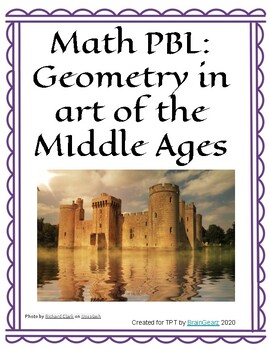Math PBL: Connecting Geometry with the Middle Ages
- PDF
Description
This design challenge was created to connect the 7th grade geometry unit to the social studies unit about the Middle Ages (taught in grade 7 in Ohio). The teacher document includes a link to the document that you can copy and edit for your desired math standards.
The essential questions overall were "Were the Dark Ages really dark?" and "What is the lasting legacy of the Middle Ages?" Since the arts is a major way that we continue to engage in this period of history, we decided to use our building's exterior appearance as the purpose for this task.
I personally know how to do stained glass, so before the school year ends, the students will select one of the designs to be created into a glass panel to go into one of the front windows at the school. I will be working with students one-on-one to teach them how to construct the panel. This will be the collaborative hands-on STEM connection.
Another option that we are exploring, to provide more technology into the process, is to allow students who are skilled in Corel Draw to create their shapes there and use our laser cutter to make the components of their final design out of transparent acrylic. I am testing this one with my 7th graders currently taking High School Geometry.
Every year, we will be adding a new panel, and the students will be learning about the physical science behind glass making and glass blowing.





